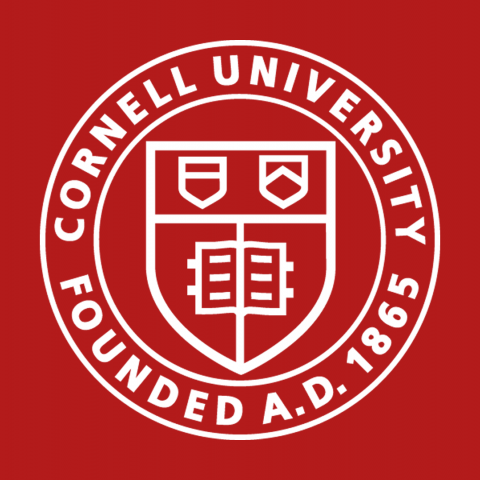Tapomayukh Bhattacharjee, Cornell University 5/20/2021 Location: Zoom Time: 2:40pm Abstract:How do we build robots that can assist people with mobility limitations with...
Kirstin Petersen, Cornell University 5/6/2021 Location: Zoom Time: 2:40pm Abstract: This is meant as a highly interactive discussion on how to write and review research...
Kalesha Bullard, Facebook AI Research 4/29/2021 Location: Zoom Time: 2:40pm Abstract: Effective communication is an important skill for enabling information exchange...
Roberto Martin-Martin, Stanford University 4/22/2021 Location: Zoom Time: 2:40pm Abstract: What is the role of physical interaction in embodied intelligence In...
Abhinav Valada, University of Freiburg 4/15/2021 Location: Zoom Time: 2:40pm Abstract: LiDAR-based scene interpretation and localization play a critical role in...
Aljosa Osep, Technical University in Munich 4/8/2021 Location: Zoom Time: 2:40pm Abstract: Spatio-temporal interpretation of raw sensory data is vital for intelligent...
Franziska Meier, Facebook AI Research 3/25/2021 Location: Zoom Time: 2:40pm Abstract: How can we teach robots new skills by simply showing them what to do In this talk...
Aditya Mandalika, University of Washington 3/11/2021 Location: Zoom Time: 2:40pm Abstract: Robotics has become a part of the solution in various applications today:...
Nathan Lambert, University of California, Berkeley 3/4/2021 Location: Zoom Time: 2:40pm Abstract: Model-based reinforcement learning is developing into a useful...
Majid Khadiv, Max-Planck Institute for Intelligent Systems 2/25/2021 Location: Zoom Time: 10:00am Abstract: Legged robots (especially humanoids) are the most suitable...
Harish Ravichandar, Georgia Institute of Technology 2/18/2021 Location: Zoom Time: 2:40pm Abstract:Heterogeneous multi-agent teams have the potential to carry out...
Anirudha Majumdar, Princeton University 12/15/2020 Location: Zoom Time: 2:55pm Abstract: Imagine an unmanned aerial vehicle that learns to navigate using a thousand...
Silvia Ferrari, Cornell University 12/8/2020 Location: Zoom Time: 2:55pm Abstract:Autonomous robots equipped with on-board cameras are becoming crucial to both civilian...
Amanda Prorok, University of Cambridge 12/1/2020 Location: Zoom Time: 12:00pm Abstract: Effective communication is key to successful, decentralized, multi-agent...
Danfei Xu, Stanford University 11/24/2020 Location: Zoom Time: 2:55pm Abstract: As robot hardwares become more capable, we will want robots to assist us with wide...
Alaa Eldin Abdelaal, University of British Columbia 11/17/2020 Location: Zoom Time: 2:55pm Abstract: Robot-assisted surgery (RAS) has gained momentum over the last few...
Lerrel Pinto, NYU 11/3/2020 Location: Zoom Time: 2:55pm Abstract: While robotics has made tremendous progress over the last few decades, most success stories are still...
Harshal Chhaya and Ayesha Mayhugh, TI 10/27/2020 Location: Zoom Time: 2:55pm Abstract: Robots are a fun and engaging way to learn a variety of subjects and concepts -...
Wen Sun, Cornell University 10/21/2020 Location: Zoom Time: 2:55pm Abstract: This work studies the problem of sequential control in an unknown, nonlinear dynamical...
Matthew Bays, Naval Surface Warfare Center, Panama City Division (NSWC PCD) 10/13/2020 Location: Zoom Time: 2:55pm Abstract: Interest in unmanned systems has increased...
10/6/2020 Location: Zoom Time: 2:55pm Abstract: GSGIC (Graduate Students for Gender Inclusion in Computing) + RGSO (Robotics Graduate Student Organization/Robotics...
Krishna Murthy Jatavallabhula, Robotics and Embodied AI Lab (REAL), Mila, Universite de Montreal 9/22/2020 Location: Zoom Time: 2:55pm Abstract: Modern machine...
Claire Liang, Michael Suguitan, PhD students, Cornell 9/15/2020 Location: Zoom Time: 2:55pm Abstracts: For our first homegrown seminar, some of our grad students...
Valts Blukis, Ilan Mandel, David Goedicke, Natalie Friedman, Travers Rhodes, PhD students, Cornell Tech 5/5/2020 Location: Zoom Time: 2:45pm Abstracts: Natalie...
Dr Nick Dokoozlian, E&J Gallo Winery; Dr Hunter Adams, Cornell University; Jonathan Jaramillo, PhD student, Cornell University 4/28/2020 Location: Zoom Time:...
Shreyas Kousik, University of Michigan 4/21/2020 Location: Zoom Time: 2:55pm Abstract: For robots such as autonomous cars, delivery drones, and manipulator arms, to...
Cross-listed from VIEN 4940, Robert Shepherd and Anand Mishra, Cornell University 4/14/2020 Location: Zoom Time: 2:55pm Abstract: Soil, the microbiome, and plant...
David Fridovich-Keil, University of California, Berkeley 4/7/2020 Location: Zoom Time: 3:30pm Abstract:Autonomous systems are becoming more and more prevalent;...
Lars Lindemann, KTH 3/31/2020 Location: Upson 106 Conference Room Next to the Lounge Time: 2:45pm Abstract: Motivated by the recent interest in the distributed and...
2/25/2020 Location: Upson 106 Conference Room Next to the Lounge Time: 2:45pm This Robotics Seminar (over February break) will be our first installment of paper...

